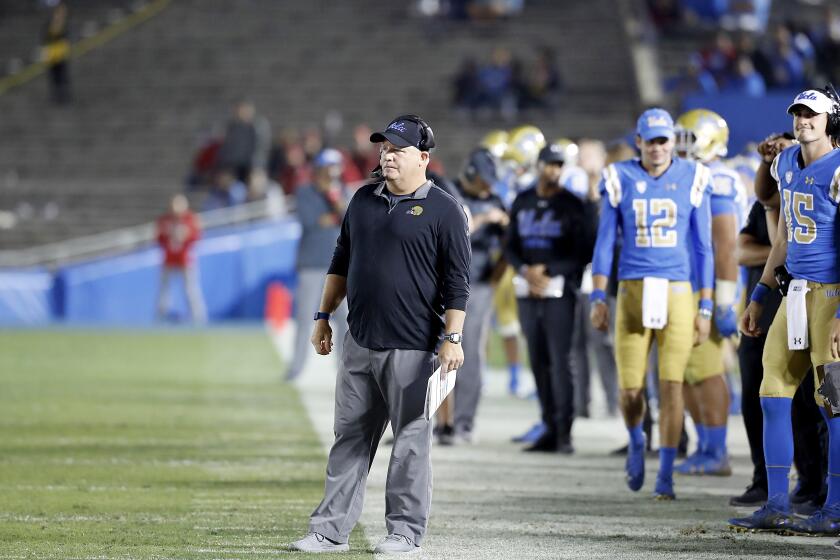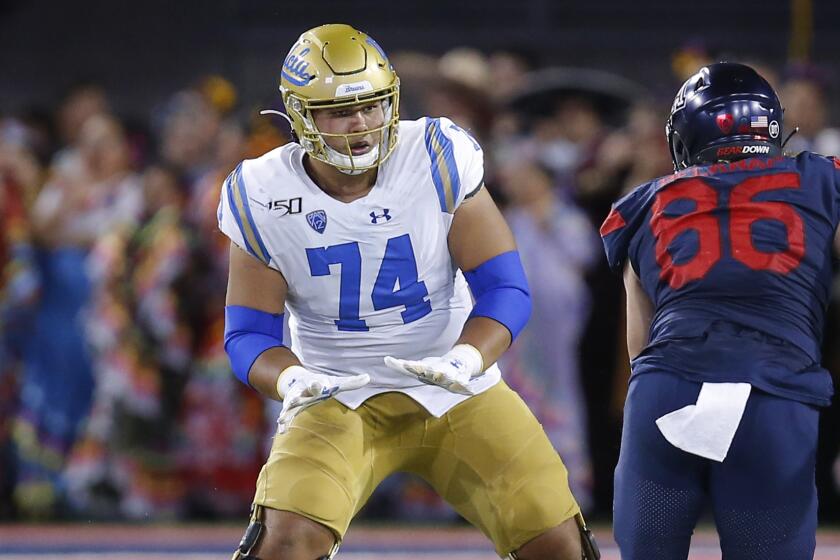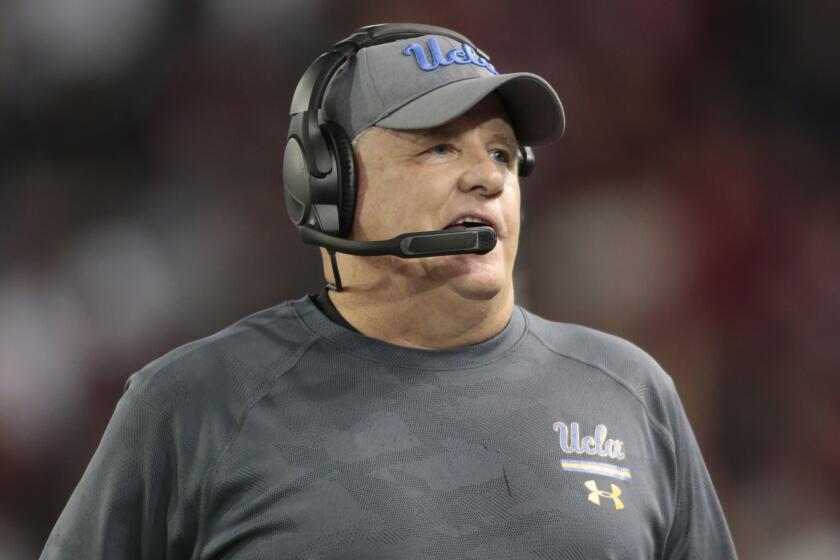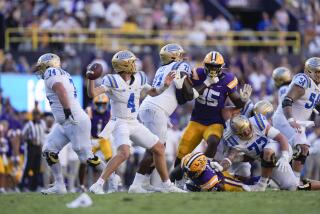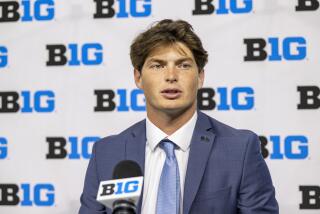UCLA’s Chip Kelly taking a bolder approach when it comes to fourth downs
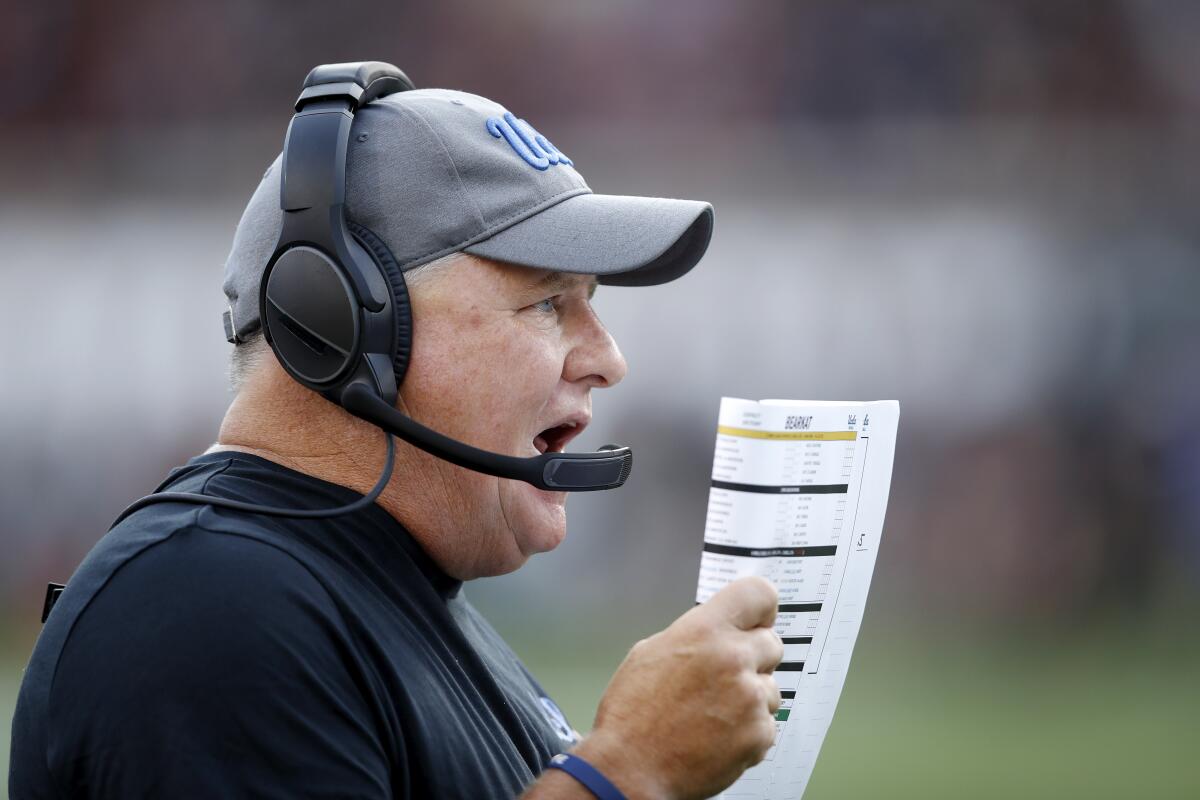
- Share via
Chip Kelly’s tendency to go for it on fourth down when he coached at Oregon earned him a nickname not fit to print.
After an initial UCLA season in which he wasn’t all that aggressive, there are signs that Kelly may be reverting to what could be called, in family friendly terms, Cocky Chip.
The Bruins went for it on fourth down at their 36-yard line on their second drive against Arizona last weekend, the first time this season that they risked a turnover on downs in the first quarter.
“It’s just, can we make it?” Kelly said of his approach. “And if we can make it, then we’re probably going to go for it.”
UCLA didn’t make it. Running back Joshua Kelley leaped into a wall of defenders on fourth and one and was stopped for no gain. Kelley said he regretted the maneuver afterward, explaining that he should have stayed low to the ground and driven himself forward.
UCLA could bring in a second consecutive recruiting class in football that doesn’t crack the top 35 nationally. The Bruins’ on-field issues are only part of the problem.
“I just gotta get it, you know? Kelley said. “I have to get it. Doesn’t matter how it’s blocked or how it looks, I have to get a yard. If I can’t get a yard, that’s not good.”
Kelley got the yard he needed in the third quarter, converting a fourth-and-one situation when he ran for three yards to extend a drive that ended with a field goal.
UCLA finished the game converting one of three fourth-down opportunities, closely mirroring its success rate for the season. The Bruins have been successful on four of 11 fourth downs, a 36.4% conversion rate that is tied with Akron for No. 101 nationally. Last season, UCLA converted 14 of 26 fourth downs (53.8%).
Kelly said the decision whether to go for it on fourth down involves more than field position and yards needed. He also assesses an opponent’s short-yardage defense, his own counter play call and how well his team has executed the play that week in practice.
“It’s not an analytics thing where the numbers tell you that on the 36-yard line you should go for it but on the 37-yard line you shouldn’t go for it,” Kelly said. “It’s really an intuitive feel.”
UCLA’s young offensive line has been engulfed in a trial by fire this season, but the unit has seen some improvement in recent games.
Another recent example of Kelly’s increased assertiveness was Demetric Felton Jr.’s 100-yard kickoff return almost two weeks ago against Washington State.
Felton’s father, also named Demetric, had become so accustomed to the Bruins fair-catching kickoffs that he stopped watching the play on his television at home.
“I kind of looked down for a minute and I heard my wife screaming and I looked up and he was running and I was like, what is he doing?” the elder Felton said. “I was like, oh my goodness, he may go all the way.”
Targeting improvement
Shea Pitts will no longer be known solely as the guy who almost got ejected from the spring game.
The redshirt sophomore linebacker made his first career sack against Arizona, providing fans with a more memorable moment than his targeting penalty in April 2018 for hitting teammate Austin Burton.
“It happened pretty much because it was an incredible job by the guys inside of me,” Pitts said, referring to a blitz in which defensive linemen Osa Odhighizuwa and Atonio Mafi forced Wildcats quarterback Grant Gunnell to run directly into him.
Pitts’ rise from relative obscurity has been a similarly heady rush. The walk-on didn’t play in 2017 while redshirting. He got onto the field as a defensive back in the 2018 spring game but would have been ejected because of his targeting penalty had the Bruins not been so short on players.
UCLA football coach Chip Kelly is a proponent of California’s NCAA reform bill signed into law by Gov. Gavin Newsom on Monday.
The penalty had been preceded by some smack talk between Pitts and Burton, who are roommates.
“He was like, ‘If I see you in the open field I’m going to run you over,’ ” Pitts said. “And I was like, OK, we’re in the open field right? He’s getting ready to run me over. And so I’m ready to go, but he slides at the last second and then at that point it was too late” to avoid the upper-body contact.
Some say Pitts was born to be a Bruin as the son of parents who both attended UCLA. His father, Ron, played defensive back on Rose Bowl teams during the 1982 and ’83 seasons before going on to spend five seasons in the NFL.
At 5 feet 10 and 204 pounds, Shea switched from defensive back to linebacker after packing on 44 pounds and increasing his speed. Burton is probably happy that his roommate leveled him before his transformation.
“Me and Austin joke about it all the time to this day,” Pitts said of the targeting play, “so no hard feelings there at all. He’s not that mad.”
More to Read
Go beyond the scoreboard
Get the latest on L.A.'s teams in the daily Sports Report newsletter.
You may occasionally receive promotional content from the Los Angeles Times.

